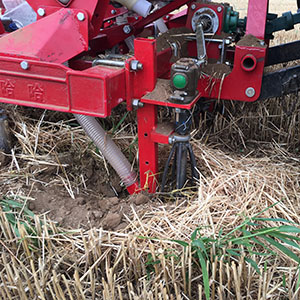Experimental and numerical investigations of the impacts of separating board and anti-blocking mechanism on maize seeding

HTML: 59
All claims expressed in this article are solely those of the authors and do not necessarily represent those of their affiliated organizations, or those of the publisher, the editors and the reviewers. Any product that may be evaluated in this article or claim that may be made by its manufacturer is not guaranteed or endorsed by the publisher.
Authors
Maize seeding is greatly affected by improper seed placement and poor planter performance under a no-tillage mechanisation system. To overcome the issue, we explored the impact of separating board and anti-blocking mechanism (0, 1/4, 1/2, 2/3, 3/4, and 1 type) on maize seeding under different forward speeds (3, 5, 7 km/h) and rotational speeds (260, 400, 530, 740 rpm), where the performance metrics included the mass of straw coiled, seeding height, emergence rate, soil mound depth, straw movement, and straw clearance. The study results show that separating board helps to increase forward and side displacements of the straw, which avoids localized accumulation of straw around the antiblocking mechanism. The straw clearance rate of the anti-blocking mechanism with a separating board is greater than that without the separating board. Therefore, the 2/3 type anti-blocking mechanism with a separating board is recommended for maize seeding at a forward speed of 5 km/h and a rotational speed of 400 rpm.
How to Cite

This work is licensed under a Creative Commons Attribution-NonCommercial 4.0 International License.
PAGEPress has chosen to apply the Creative Commons Attribution NonCommercial 4.0 International License (CC BY-NC 4.0) to all manuscripts to be published.

 https://doi.org/10.4081/jae.2022.1273
https://doi.org/10.4081/jae.2022.1273



